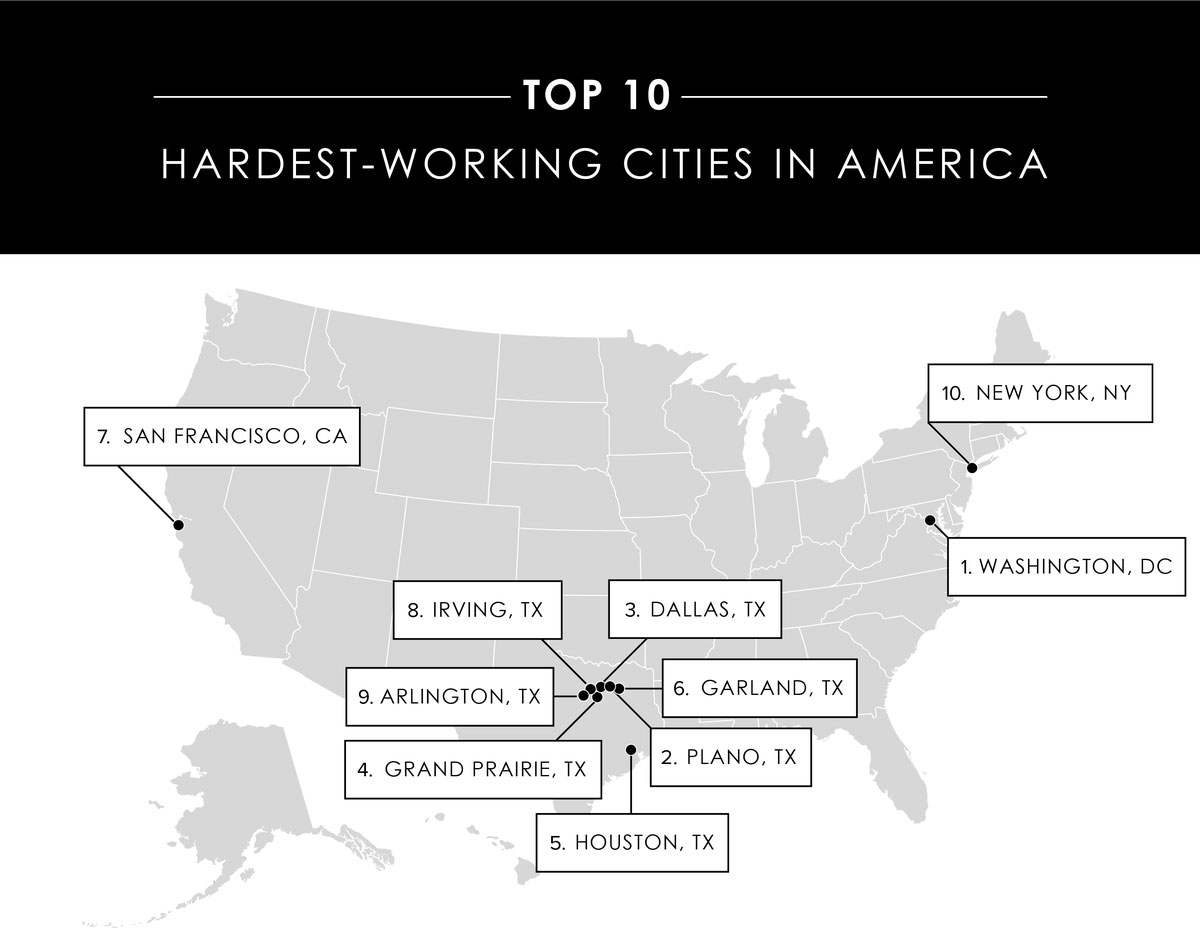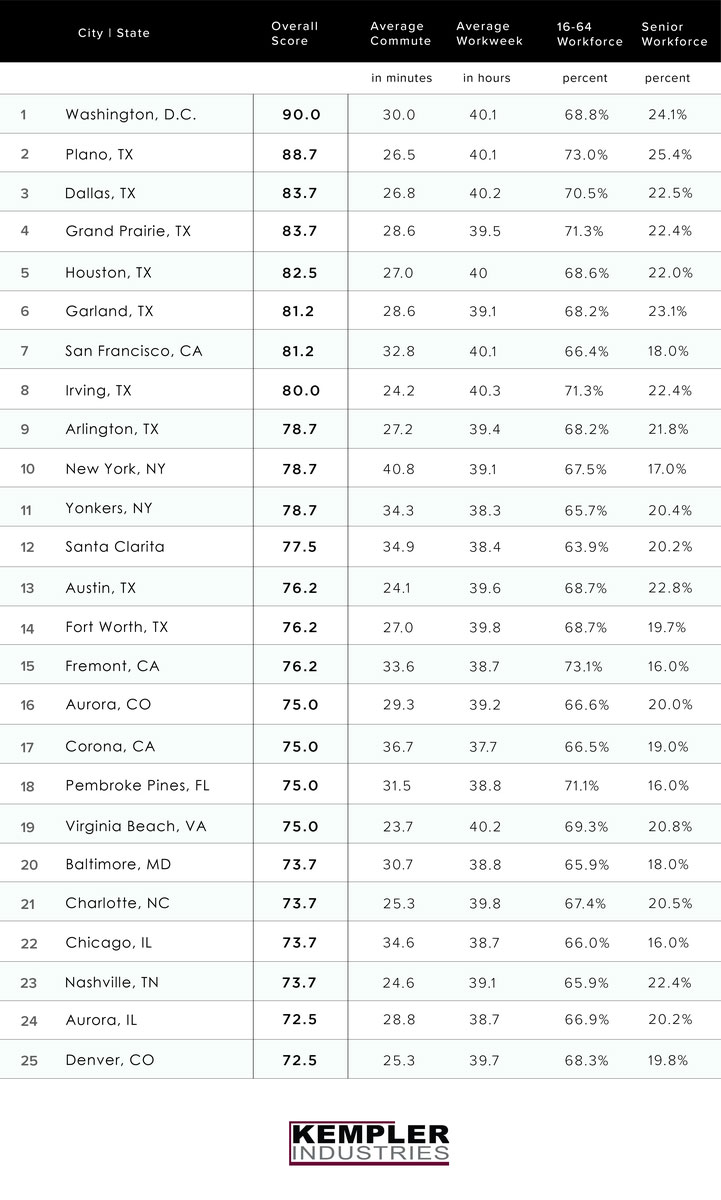
August 13, 2019
Afterall, the United States has consistently ranked among countries that clock-in the most working hours each year. But since we already know that the U.S. is one of the hardest-working countries, we wanted to dig deeper and find the hardest-working cities in America.
In order to rank the hardest-working cities in America we analyzed data from the Census Bureau from nearly 200 cities with a population of 150,000 or more. From Chicago to Charlotte, the results reveal a mixture of cities both large and small.

Washington D.C. tops our list at No.1 with an overall score of 90 points out of 100. D.C. exceeds the national average commute time, average workweek hours and percent of seniors still in the workforce.
Although D.C. is No. 1, Texas might be home to the most bragging rights. They say everything is bigger in Texas and apparently the same can be said for how hard Texans work. Seven out of the top ten hardest-working cities within our list are located in the Lone Star State. So, what is it about Texas that makes the state rank high? One contributing factor is that all seven cities have at least 20% or more of their senior population still in the workforce. Not only are Texans within those cities working longer, they are also commuting longer. With the exception of Irving, every Texas city within the top 10 has an average commute that is longer than the national average (26.4 minutes).
In terms of population, the largest cities on our list are Chicago and New York City while Pembroke Pines, Florida and Grand Prairie, Texas are the smallest cities on our list. Whether it’s a sprawling city or a small Florida suburb, hard work is certainly in America’s DNA and based on these results, there are no signs of slowing down.
Methodology
To determine our ranking, we looked at census-defined places with at least 150,000 people in via Census Bureau data. We compared these cities across five key metrics, average commute, average workweek hours, percent of the 16-64 workforce population, percent of the senior workforce population and percent of unused vacation days. Each metric was graded on a 100-point scale.
To determine an overall score, each city’s weighted average was calculated across all metrics.
Percent of workforce population age 16-64: 20 points
Average commute (in minutes): 20 points
Average hours worked per week: 20 points
Percent of workforce population age: 20 points
Percent of unused vacation states (state-level data): 20 points
Sources: U.S. Census Bureau, U.S. Travel Association
For media inquiries, contact media@digitalthirdcoast.net
Fair Use
Feel free to use this data and research with proper attribution linking to this study.
From tradition to transformation Sequoia Brass & Copper has stood for excellence in American manufacturing. In this episode, we sit down with Kim MacFarlane, President of Sequoia Brass & Copper, to hear the inspiring story of a family-owned company founded by her father, built on craftsmanship, trust, and a relentless commitment to quality. Kim shares how she’s guided the company through the challenges of modern industry while honoring its heritage, and how the next chapter will be carried forward by her son Kyle. This is more than a story of brass and copper; it’s about resilience, innovation, and the enduring strength of family legacy. If you’ve ever wondered how tradition can meet the demands of today’s industry hit play and be inspired.